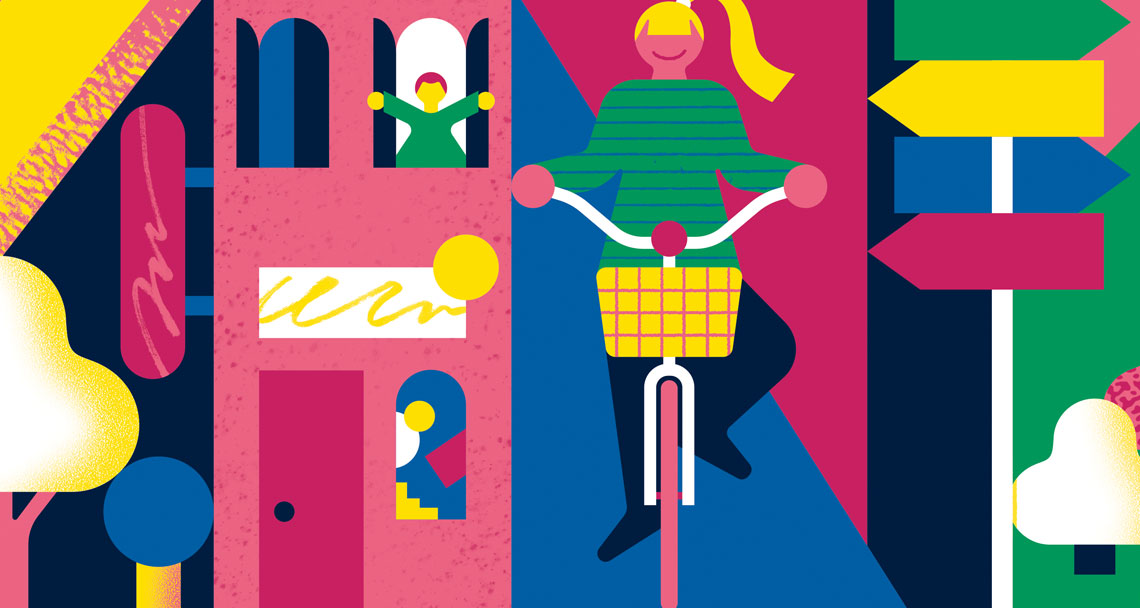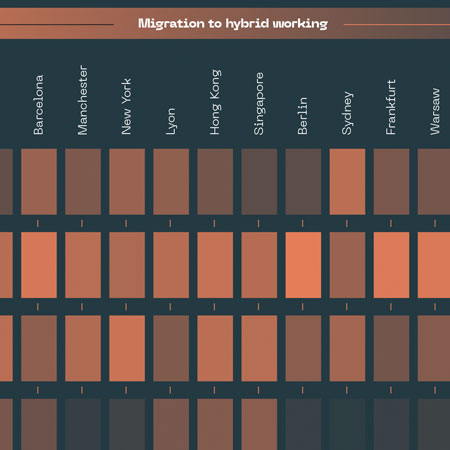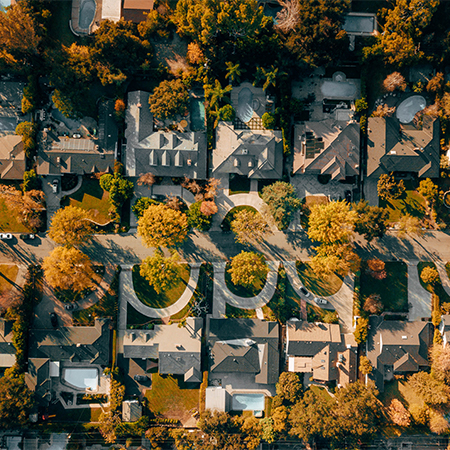A new place to call home
The pandemic has brought about a possibly permanent shift in our view of home. Despite the new love affair with the coast and the countryside, the conviction for most remains that the city lights will draw us back, but that we will wish to change the way we live in the metropolis. The walkable urban lifestyle seems set to be the new ideal. In the 15-minute city, education, entertainment, healthcare and work would all be within a 15-minute trip from home on foot or by bike. There’s also demand for more space.
Housing markets around the world have been remarkably resilient to the economic turmoil caused by the pandemic. Property prices in 2020 increased 19% in Auckland, 14% in Seattle and 11% in Berlin (see index below). Key to this resilience and future growth, on top of the renewed passion for our homes, has been the mix of government policy and central bank measures. These seem likely to remain in place.
But what unfolds after the global vaccine roll-out, the end of lockdowns and the resumption of international travel? Our accounts of the pandemic highlight lessons learnt during the time of Covid-19 and which changes are likely to last.
Our seven experts discuss how shifting priorities and lifestyle choices are affecting residential real estate markets globally.
Katy Warrick, London
Head of London Residential Development Research, Savills
London’s global appeal continues. Despite talk in the UK of the capital losing its shine as a result of the pandemic, that’s not the global perception, where people prize things like the education here. We wait to see what Brexit means for the City of London, but there has been a growth in industries such as fintech and green finance.
When the UK market reopened in May 2020, the new build market continued to attract international interest. People were happy to buy properties of under £1 million via a virtual viewing.
In the second-hand market, suburbs such as Wimbledon, Richmond and Wandsworth have outperformed. Prime central London was more reliant on the domestic market than usual but transactions were robust, with £5 million+ sales in 2020 at their highest for four years. This market is expected to grow 7% in 2022, driven by demand from those who were unable to travel.
“Prime central London was more reliant on the domestic market than usual but transactions were robust”
Across London, supply remains an issue. Developers got used to new ways of working and continued to build. But completions in 2020 were 10% lower than in 2019 as a result of the disruption in the supply of materials. In 2021, starts on sites are dropping, a big problem given the commitment in City Hall’s plan to deliver 52,285 new homes a year.
London 2020 price growth: 3.6%
Mauricio Umansky, Los Angeles
CEO and founder, The Agency (Savills associate)
Tastes shifted during the pandemic as home became the centre of the universe. Major cities will draw people back to their beating hearts, but the search for a bigger backyard or room to roam has caused a tectonic shift in inventory and pricing. During the pandemic, sand, surf, quality schools and a walkable lifestyle drew people from the East Coast, Greater LA and Northern California to Venice, Playa del Rey and the Marina. Malibu had a 104% increase in the sale of single-family homes. As international travel resumes, demand could position LA for a record-breaking year. Video content will still be key. In 2019, our Instagram videos would receive about 5,000 views. At the end of 2020, one property had more than 150,000. Views translated into contracts that were delivered.
Los Angeles 2020 price growth: 10.0%
Shveta Jain, Delhi
Managing Director, Residential Services, The Private Office, Savills India
At time of writing, we are, sadly, in the midst of a second Covid-19 wave. The pandemic and subsequent work-from-home phenomenon brought to light the need to have a spacious and well-equipped home. It also made buyers location agnostic, propelling first-time buyers to prioritise larger spaces over premium locations.
Increased activity was supported by price corrections and low-borrowing rates, with first-time buyers and home movers having to act quickly in a fast-moving market. A reduction in stamp duty has triggered demand for prime homes in metro areas, particularly for to ready-to-move-in and near-completed projects as opposed to under construction homes.
Looking ahead, we expect the demand for larger, ready to move in suburban homes to continue as well as smaller properties in more central locations. We will also see increased interest for second homes in destinations which offer peaceful and pollution free environments.
Alex Shatalov, Moscow
CEO, Savills Russia
The prime market is performing very well and I suspect this will continue. There is a belief that property provides the best returns. The mainstream market is also active, partly because of a state-sponsored mortgage support programme, with loan rates of 6-7%. For other borrowers, the rates are 10-11%. The imposition of income tax on bank deposits has also helped the buying spree.
The market was quiet in April and May last year, but when it restarted in June, the pace immediately picked up. Sales in the prime market in 2020 were 11% up on 2019, with about 600 deals in the $1 million+ sector.
In Moscow, most properties are flats. There has been increased demand for those with extra space as more people are working from home. During the first weeks of lockdown, there was a spike of interest in country house rentals from people fleeing city centre flats.
The smartest and most popular neighbourhoods for high-end residential are Khamovniki,
Patriarch’s Ponds and Ostozhenka. A new up-and-coming area is Zamoskvorechye, in the centre beyond the Moscow River.
Moscow 2020 price growth: 4.8%
Sales in the prime market in 2020 were 11% up on 2019, with about 600 deals in the $1 million+ sector
Stan Ennor-Glynn, Dubai
Director, International Residential Sales, Savills Middle East
Since coming out of lockdown in the early summer of 2020, there has been a distinct movement of established UAE residents from apartments in the more urban areas to villas and townhouses in gated communities. We have also seen a surge of first-time buyers and end-users choosing to own their home over renting for the foreseeable future – the UAE has previously been considered a transient hub of employment, but there is a shift to a longer-term view. 2021 has seen an unprecedented influx of international HNWI buyers seeking out luxury second homes in prime locations and noteworthy numbers of Europeans choosing to base themselves and their families in Dubai.
Dubai 2020 price growth: -6.4%
2021 has seen an unprecedented influx of international HNWI buyers seeking out luxury second homes in prime locations
Shirley Tang, Shanghai
Head of Residential Sales, Savills China
Lockdown changed how and where people wanted to live, with more demand for larger apartments of 250 sq m – the typical unit is 100 sq m. There has been a surge in the popularity of Shanghai and its surrounding cities. It is seen as safe with an exceptional business environment as more international companies are coming. Thanks to government stimulus and new infrastructure, Wuhan is also seen as a bright prospect.
The Chinese tend to be confident about the market and don’t expect prices to fall. The market cooled when Covid-19 hit, but the government was responsive, introducing policies to reinvigorate the market. Several industries quickly adapted to the situation, creating a new group of buyers as their businesses prospered in the post-Covid world. The focus is no longer Covid-19, but ensuring the economy not only recovers but thrives.
Shanghai 2020 price growth: 5.8%
Alexandros Moulas, Athens
Commercial Director, Lamda Development SA
One side effect of lockdown has been to make people think about the future of cities, with a lot of emphasis on the 15-minute city concept. In Athens, Lamda Development has this vision in mind as we design and develop The Hellinikon Project. This new city of 25,000 people is rising up on the 620-hectare site on which the old Athens airport used to stand. It is located between the city centre and the coastal southern suburbs and is one of Europe’s largest regeneration projects. Already, we have had enquiries from 50 countries. The total investment is about €8 billion and it is estimated to create 75,000 jobs on full operation.
There will be 9,000 homes, including a wide range of residential properties; 2,500 hotel rooms; offices; shopping centres; a marina; cultural and education facilities and a 200-hectare park that will be larger than London’s Hyde Park. The upgrade of the coastal front will deliver a marina and Blue Flag beaches. Hellinikon, meaning ‘the Greek’, is a flagship project that attracts domestic, Greek diaspora and international buyers. The Greek diaspora resides in major financial and shipping European hubs as well as key markets across the globe, such as the US and Australia. Many are seeking a better work-life balance.
Athens 2020 price growth: 5.3%
Hugo Thistlethwayte, London
Head of Global Residential Operations, Savills
There has been a realisation that a second home doesn’t need to be an hour from a main city residence, but could be in Aspen, Jackson Hole or Switzerland. This trend could make places like the Algarve, Mallorca and the south of France 52-weeks-a-year locations. It could also change the perception of winter sport centres – a shift from the higher resorts, where skiing is the lure, to places like Gstaad where skiing is just one of the attractions.
In the future, buyers of second homes will want to live in a town with good restaurants and supermarkets, but it can’t be so small that you’re running into the same people. It also needs to have good transport links. This change in preferences emerged in the late spring of 2020. Once it was proven that working from home was possible, some people began to think about how they would live in the future. A property, even one far away, could be less of a holiday home and more of a second home.



